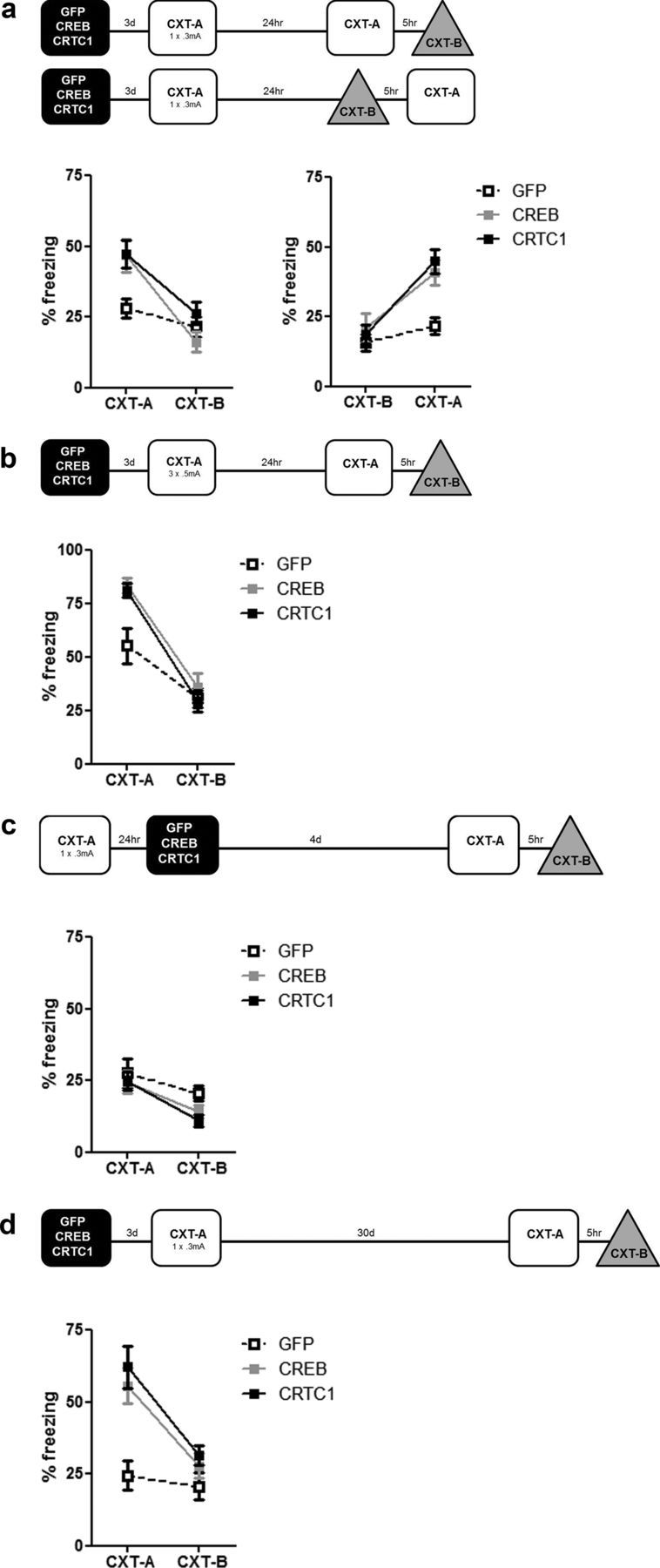Figure 3.

Locally and acutely increasing CRTC1 or CREB levels in DG during training enhance consolidation of contextual fear memory; this memory enhancement is context specific, not due to an effect on memory expression, and long lasting. a, Microinjection of CRTC1 or CREB vector in DG before weak training (1 × 0.3 mA shock) enhances contextual fear memory (CRTC1 vector, n = 29; CREB, n = 24; GFP, n = 27). This memory enhancement is specific for the training context (CXT-A), and does not generalize to a similar, nonshocked context (CXT-B), regardless of context testing order (CXT-A then CXT-B, left, or CXT-B then CXT-A, right). Mean ± SEM. b, Microinjection of CRTC1 or CREB vector in DG before strong training (3 × 0.5 mA shocks) enhances memory for contextual fear; this memory is specific to the training context (CXT-A) (CRTC1 vector, n = 10; CREB, n = 9; GFP, n = 8). c, Microinjection of CRTC1 or CREB vector after training does not facilitate memory expression (in either context) indicating that the enhancement of context memory by these vectors is not due to effects on memory expression/retrieval (CRTC1, n = 12; CREB, n = 11; GFP, n = 11). d, Memory enhancement produced by microinjection of CRTC1 or CREB vector is long lasting and maintains precision. Microinjection of CRTC1 or CREB vector before training (1 × 0.3 mA shock) enhances memory for contextual fear even when tested 30 d later (after transgene expression has dissipated) (CRTC1 vector, n = 12; CREB, n = 16; GFP, n = 9). This memory enhancement is context specific (only observed in CXT-A).
